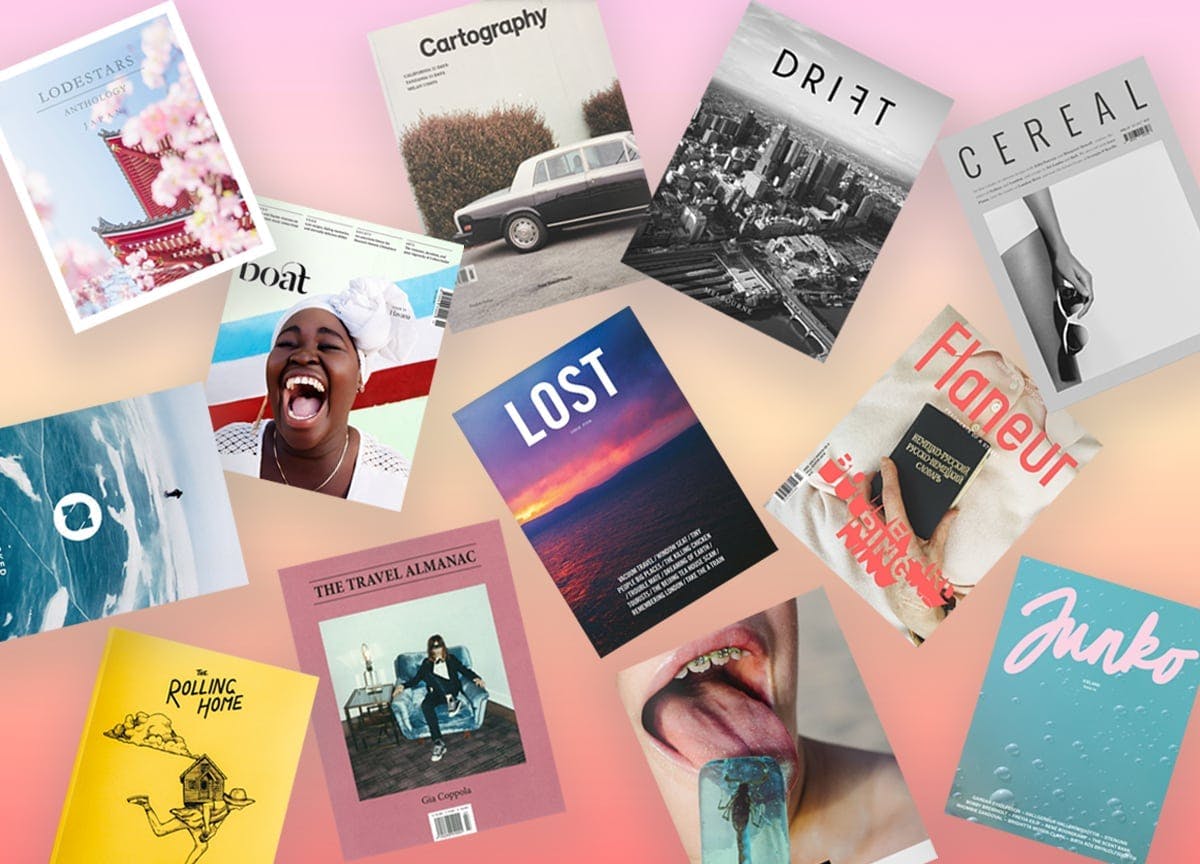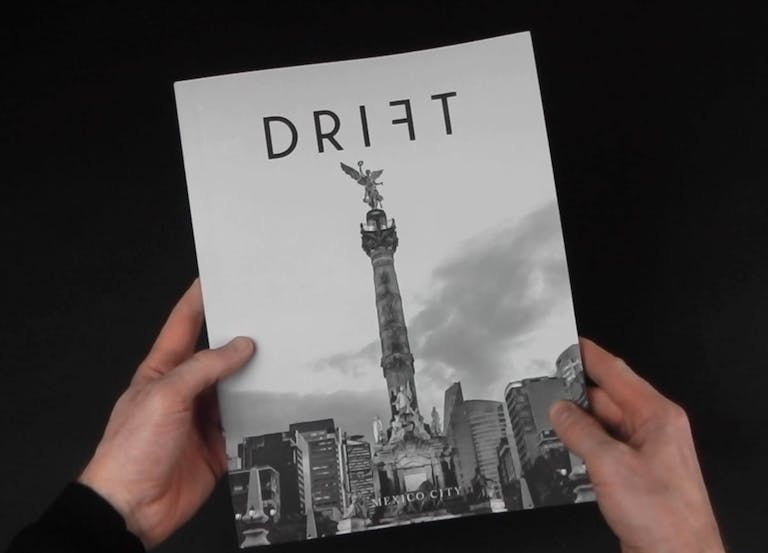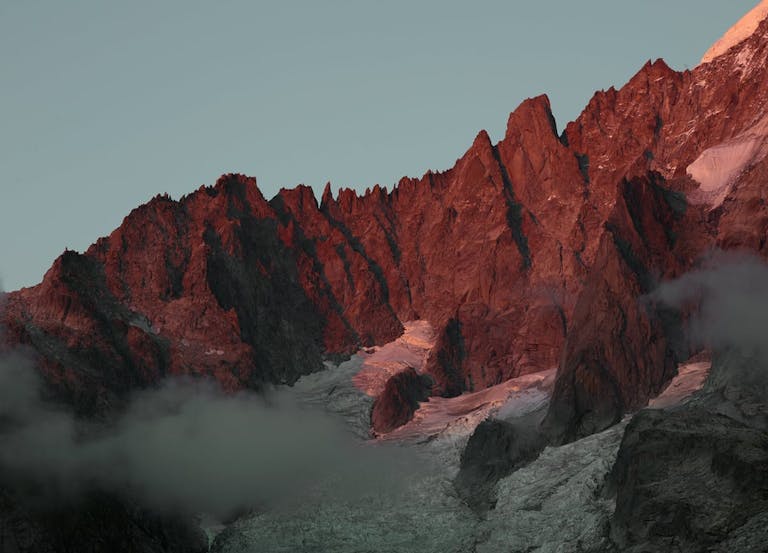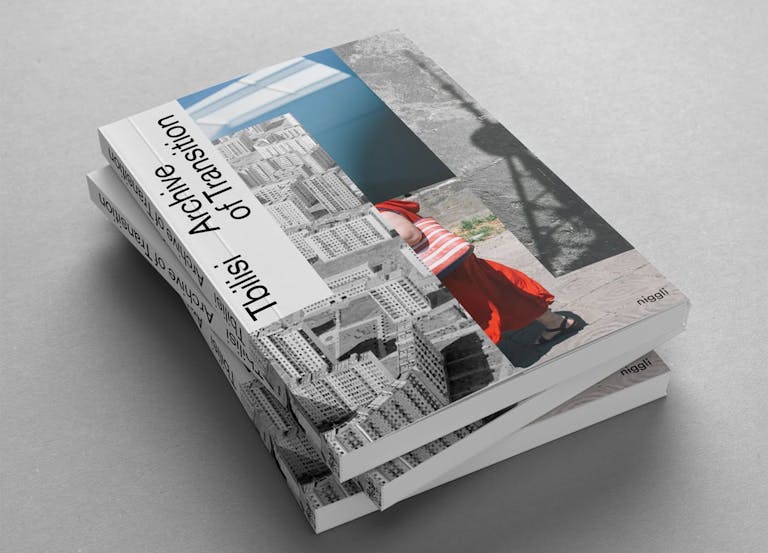Best independent travel magazines
In the past few weeks, we’ve been seeing a lot of appetite for travel publications on our weekly magazine offer Sampler. Independent titles, with their affinity for personal narratives and weirder, more obscure places, provide the perfect inspiration and escapism for curious readers. Below you’ll find a roundup of the most adventurous, intelligent and beautiful magazines that just can’t sit still…
Flaneur

Zooming right in on a single street, Flaneur creates entire issues packed with fascinating stories from one road, junction or corner. Each issue, their editorial team moves into an apartment near the location, and embarks on daily missions to explore the lives, culture and histories of local shop owners, residents and hangers-on. They then piece together these ‘fragments’ to find often mysteriously connected narratives, forming epic, thick volumes like their latest issue examining Boulevard Ring in Moscow.
Lost

Similarly devoted to the intimacy of personal narratives, Lost is a magazine about self-discovery through travel. Published out of Shanghai, each page feels carefully designed, with the two languages (Mandarin/English) folding over each other like a choreographed dance. It believes that travel is less about where you are or what you see, but rather internal reflections and epiphanies brought about by immersing oneself in someplace entirely foreign.
The Rolling Home

The Rolling Home similarly embraces the uncertainty of blind, destination-less travel. But they take it more literally, by telling stories of people embarking on “alternative living” in mobile homes around the world. It’s packed with first-person narratives by individuals who are often talented photographers, chefs, sketchers, or craftspeople, so you get an intimate, beautifully presented sense of their adventures. Expect idyllic scenes from a campervan in the snowy mountains of Japan, lush dinners of smoke-it-yourself salmon, cosy nights in a wooden trailer stuffed with blankets, and lots of smiling faces aimlessly cruising and exploring.
Cartography

Sitting at the opposite end of the travel spectrum is Cartography. With a focus on expert itineraries, this Milan-based magazine comes with practical travel information like recommended stops, maps, photo albums and texts, so you can start planning a trip or just bring the thing with you on the road. Every issue comes with the number of days it has planned out for each destination, so you can use it as your good-looking, thoroughly researched and well-considered travel guide.
The Travel Almanac

Most of the magazines on this list fit into the post-tourism category, but The Travel Almanac was one of the first publications to define the genre. Started in 2010 out of New York and Berlin, it’s renowned for its elegant, minimal design, and literary approach to travel writing — instead of the ‘Top 10 Luxury Hotels in XXX’ style coverage, they aim for more artistic representations that evoke a sense of the feeling of a place.
Drift

Drift takes coffee culture as its starting point and travels to a new city each issue. They’ve visited Havana, Tokyo, Stockholm and New York, digging deep into the local cultures through the drink and the people around it. Their latest Melbourne issue spoke to refugees seeking asylum, who are trained to be baristas at one of the city’s best cafes, and profiled an artist building and refurbishing old espresso machines. The same publishers also make Ambrosia, which is more centred on food.
Boat

Like Flaneur, Boat relocate their studio to each new city they visit, staying for a month and immersing themselves in their surroundings by meeting up with and collaborating with local photographers, writers and creatives. The magazine is a result of these collaborations, and in its pages you’ll find refreshing stories told from the unique mix of perspectives, both from the cities’ inhabitants and the editors’ own outsider’s eye. Their subjects have included the Faroe Islands, Havana, Tel Aviv and Detroit.
The Collective Quarterly

Also focusing on the creative process, The Collective Quarterly sends artists and craftspeople to a new location each issue. Once there, they draw on their surroundings to produce art, clothing, homewares and more, and the whole creative process and its inspirations are documented to create the magazine. Their destinations tend to veer towards more uncommon, desolate regions of the United States, like Absaroka, Pisgah, Topa Topa, or the recent Mojave issue.
Junko Journal

Taking a more geographical response, Junko Journal is interested in how the environment of a place influences individual creativity. In their California issue, they explored Route 66 with a photographer, while their Iceland issue featured ceramics made from local sulphur. Channeling the landscapes of the place into the physicality of the magazine, they inject interesting paper stocks to provide an immersive reading experience.

Sidetracked

Like The Rolling Home, Sidetracked magazine is filled with a sense of adventure. It goes to the most remote corners of the world where travellers undertake extreme expeditions — think climbing up a cliff while waves crash next to you, or fatbiking across an empty desert. The photography is breathtaking, and the writing is intensely personal and fuelled by awe-inspiring endurance.
Lodestars Anthology

One thing the magazines in this lineup have in common is the way they provide a place for quiet escapism. But perhaps the most calming and leisurely reading experience can be found in the pages of Lodestars Anthology. Aiming to provide a ‘scrapbook’ of the places it visits, it travels to a new country each issue to discover the quirks and charms therein. Think of it as something to guide and inspire, but not dictate your travels.
Cereal

Last and definitely not least, we have Cereal magazine, one of the most distinctive and well-loved travel magazines among the independents. Known for its minimalist design and subdued tones, their unique vision is emblazoned on each page, through evocative words and big, beautiful images that make you feel like you’re at the exact spot the picture was taken. Their most recent iteration sees creative director Rich Stapleton photograph the Sydney Opera House’s glimmering tiles, presenting this instantly recognisable landmark like you’ve never seen before.
—
Stay up to date with the best independent publishing — sign up to Stack and we’ll send you a different, surprise independent magazine every month







